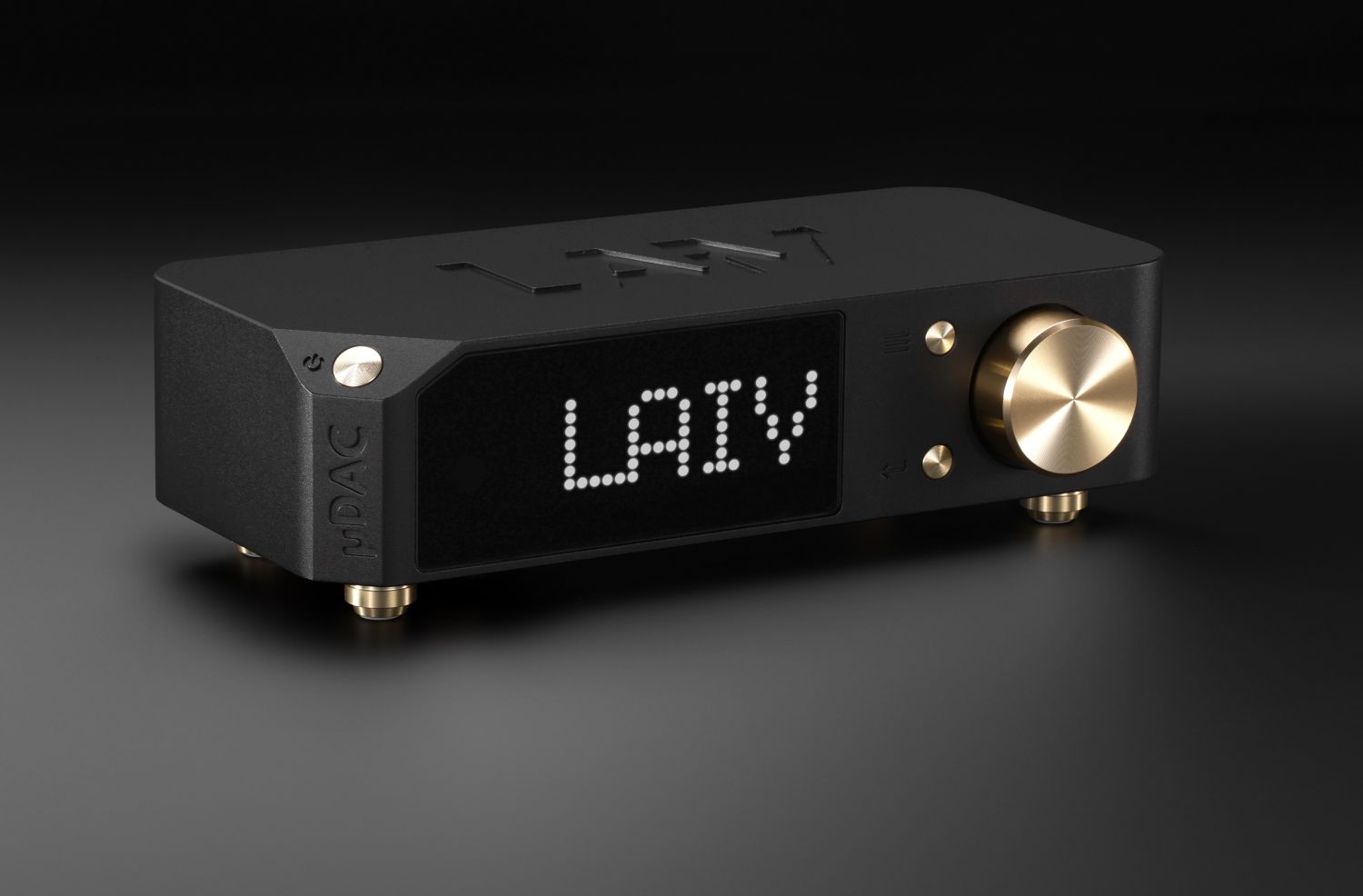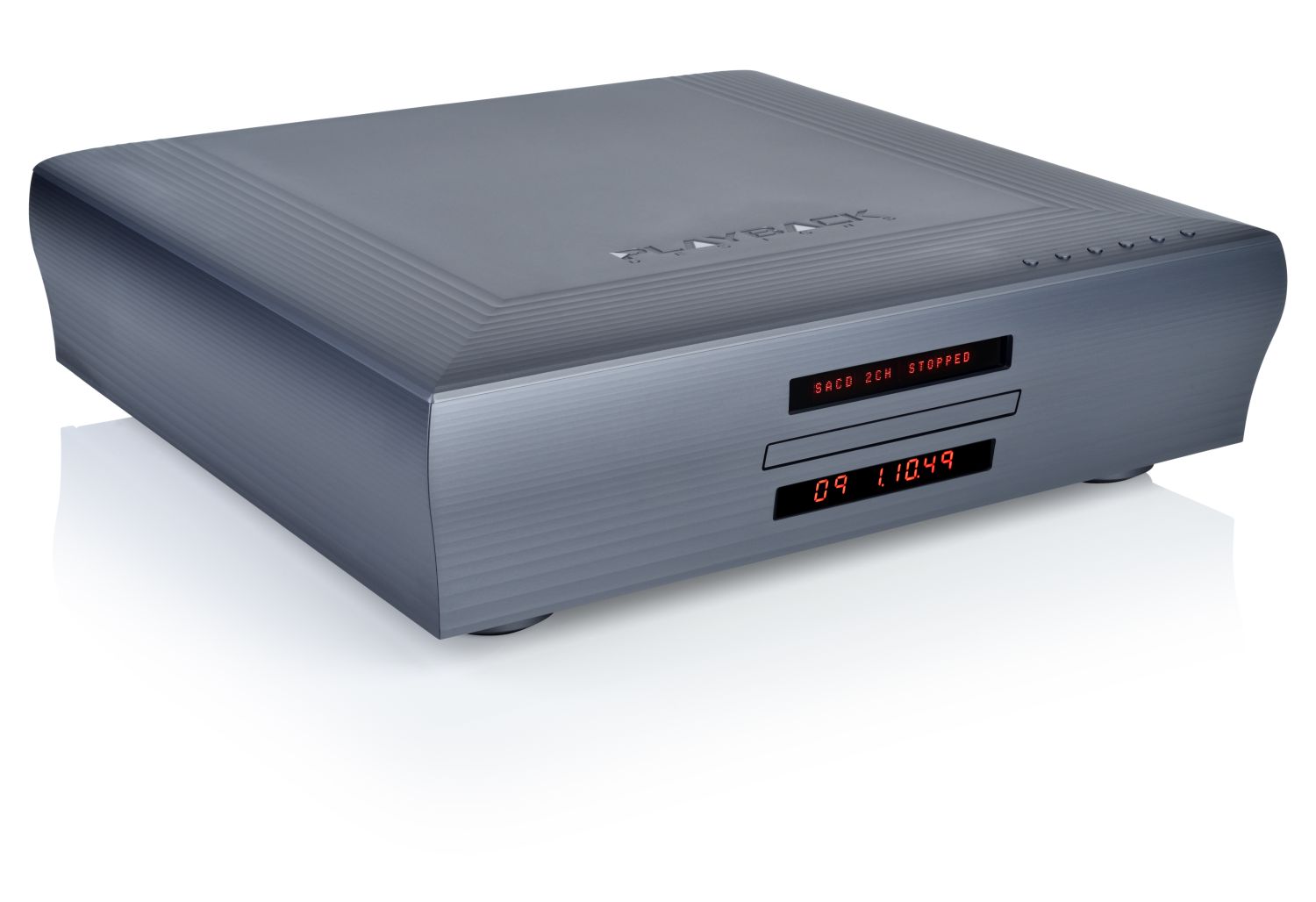PS Audio PWD (Perfect Wave DAC) – part 2
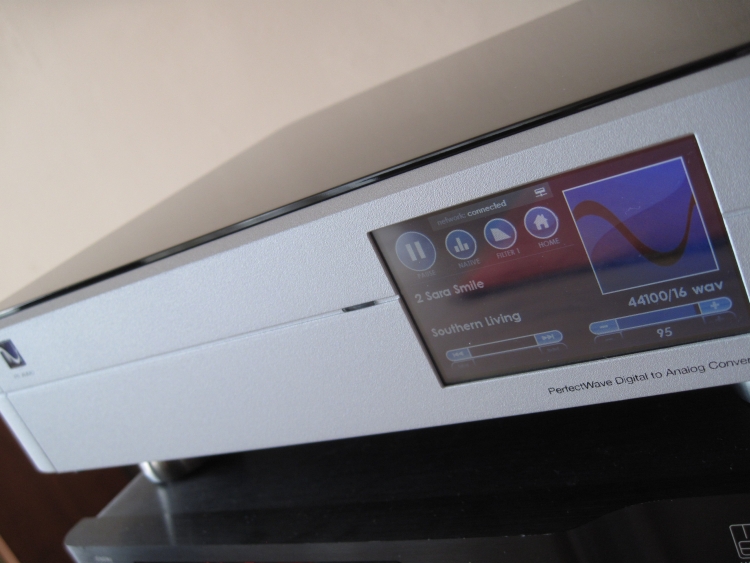
Lots has happened since part one and I’m starting off this review with a silly comparison so buckle up and go for it!
Listening proceeds with a Synology NAS
By now, I have bought a Synology NAS and installed it near the PC and Mac and the switch that connects them all together and also connects to the PWD. I haven’t compared the NAS to the Mac and PC soundwise yet. I’m guessing that if anything, the NAS will sound more like the Mac than like the PC. But we’ll see about that later. There’s just so much to test… But for now just know that all following observations are with the Synology NAS as a source.
Comparing with the Wadia 171i/iPhone/Wadia 27ix GNSC DAC
This is a weird comparison. And I would have never made it if I hadn’t reviewed the 171i on itself and happened to have a friend bring by his Wadia 27ix GNSC Reference DAC to test for a few weeks. I stated in part 1 that I found the PWD to sound dark and that it reminded me of the Wadia 861 that I had some years ago. I also said that the Wolfson DAC used in the PWD is suspect. This suspicion has increased after listening to the Wadia 27 again. Even though all Wadias sound a bit dark, there’s a smoothness and rich sophistication to the sound of the 27ix GNSC that the PWD simply cannot match. At first I used a Harmonic Technology Pro ACII powercord and the same Transparent Ultra XL interlinks as used for the Wadia and the other source components. The PWD’s sound signature is probably not only down to the Wolfson DAC but also to the output stage as even though the PWD is made with lots of care and some of the best components have been chosen, there’s no denying that DACs such as the Levinson no.360S and the Wadia 27ix have much more elaborate electronics. The Levinson has huge output stages, spanning almost the entire surface inside the dac and the Wadia has a power supply so immense that it takes up more than half the real estate inside and consumes a constant 60 watts. So, the comparison is both weird and unfair but the facts are here: the PWD, streaming from a Synology NAS, sounds almost the same as the 171i/iPhone/Wadia 27ix GNSC combo! I’ll let that sink in… I was a bit disappointed too. In my PWD that is. I expected it to be better. And better it is, in some areas, such as bass, body, drive and solidity. But the Wadia 171i/27 combo, even though they make use of spdif for data transfer, manages to sound airier, smoother, harmonically more complete and altogether more refined than the PWD. And even if the Wadia combo doesn’t have the PWD’s all-out drive and dynamics, I actually prefer -dare I say it- the tiny 171i!
Well, some perspective is probably in place because we are of course talking about the Wadia 27ix with GNSC upgrade. I forget the exact price but that DAC was immensely costly and the upgrade alone was also a few thousand euro so I suppose it isn’t really fair to expect the PWD to perform just as well in all departments.
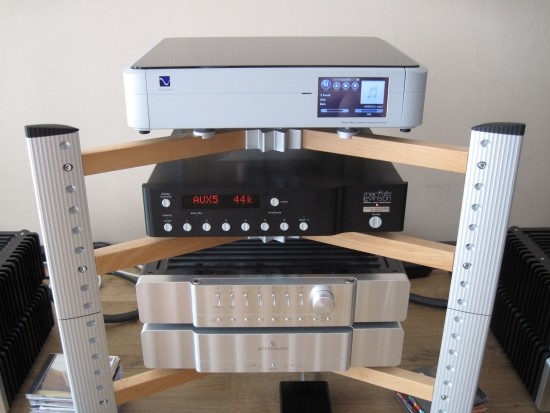
Premature conclusion
Not content giving up so easily, I later swapped the Harmonic Tech powercable for a very expensive Echole Obsession. While this powercord lends the PWD much more refinement and creaminess, it still doesn’t hide the fact that the PWD just sounds less luxurious, less exuberant, less creamy and just less harmonically complete than the reference dacs such as the Levinson and Wadia. In addition, it mellowed the sound so much that the PWD lost some of its dynamics and speed. But this could be cured by adding a second extensionblock, especially for the PWD. This way, the PWD wasn’t bothered by all the Rowlands that were connected too. And indeed: this gave the PWD back some of its speed and dynamics. Overall, it now sounded pretty well-balanced, but I felt that on balance it still it lagged behind the Wadia. If I were forced to make a conclusion at this stage, I’m afraid that I just couldn’t proclaim the PWD state of the art. In the world of computer audio and the streaming arena, the PWD probably is indeed one of the very best currently available, but its DAC qualities lag behind in some departments when compared to state of the art DACs such as the Wadia 27ixGNSC or the Levinson no.360S. Then again: the PWD does things that these DACs cannot, such as an immaculate sense of timing, startling dynamics and of course versatility.
Premature indeed
Now the game was on. The addition of the Echole power cable had already gone some way but I was determined to get the PWD to sound better still. At this stage, I had no hopes that it would surpass the Wadia 27ix GNSC entirely but surely it could be bettered in some areas.
First up for experimentation was the network cable. Hold on, hold on, I know that it shouldn’t matter. Couldn’t matter. I agree: it is ridiculous. But I found out that it does matter indeed. I had a suspicion that it would and had prepared to test this. For that, I bought two new 30 meter cables and compared them to an older cable that I already had lying around. This older cable’s category is not specified but it is a thick, very solid and very stiff cable. And it was this cable that I started out listening with. Once I swapped to the other cable (a thinner, more flexible cat6 cable) I couldn’t believe my ears. Instead of solid, grounded, dynamic yet dark sound now there was open, airy and fluid sound. Argh.
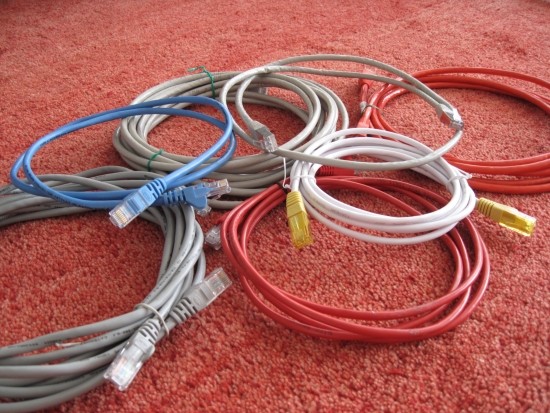
I guess that streaming is perhaps comparable to a cd transport playing a regular music stream over a cable to a dac. It’s apparently not just sending data packets. Well, officially that’s exactly what it is. But I suspect that there is more to it than that. How else would you explain that it even matters on which computer you run the server program? Indeed, you heard that right: I tried both a Macbook and a Windows PC, both running the same program called eLyric from PS Audio. Of course the program is written differently in order to cater to both operating systems, but still: it was only data packages, remember?
Running PS Audio’s eLyric on a Macbook Pro
In order to use the PWD as a streamer, it is necessary to have a server in the network. This could be any DLNA compatible NAS but can also be a computer running appropriate server software. When I started writing this review, I didn’t yet have a NAS so I chose to use PS Audio’s own eLyric and first installed it onto the Macbook. I won’t go into details about the installation and usage but will tell you that it works like a charm. Sure, there could be more settings to adjust the program and its library to your own preferences but given that the software is still in beta stage I can forgive that. Let me boil it down for you: the software is easy to install and easy to use. It just works. (as long as you don’t have an IP conflict…) All first impressions were made using the Macbook as a server source. In an early stage I already compared the sound of eLyric running on the Mac to the same program running on the PC and sure enough: there were differences. Again I say: Argh.
Installing PS Audio’s eLyric on the main Windows XP Tower PC
It wasn’t until I installed eLyric on the PC that I became aware of the differences though. I only did so because my main music library resides on the PC, not on the Macbook. I didn’t expect any differences to be there so didn’t actively listen for them. But as listening proceeded, this time with the software running on the Windows PC, slowly I became somewhat irritated by the sound. It was a bit coarse and lacked some sparkle. I went back to the Mac and played the same tracks. By now I had copied some oft-used cd’s to both machines for comparison. And sure enough: the Mac sounded airier and more transparent. It was also had slightly less body in the bass, but since the PWD already has good bass, that was not a problem. Regular readers will recognize these differences, as they apply as well when the PC and Macbook are connected via USB to the Ayre QB-9 DAC. Crazy times. But I’ll be damned if it isn’t true. For real: I don’t have anything to gain by claiming so. I’m not hearing my wallet and I’m not dependent on advertising or whatever. I hear these kinds of differences because I cannot not hear them. Okay, enough ranting now. Back to hearing differences between servers. Most of the early listening was done with the Macbook and at some stage I switched to the Synology NAS, but I didn’t do any comparisons. I guess I was just swamped by the sheer possibilities here. But after hearing the results in the Wadia comparisons and network cables, I figured that I owed it to myself to compare the NAS to the Macbook and PC once more.
What will now follow is a pretty lengthy report of how I found out that for a NAS, too, network cables and even powercables can influence the sound.
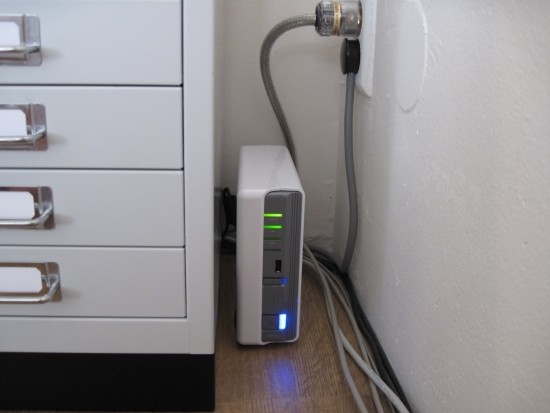
A closer look at the Synology NAS
After all the tests that were done so far, it was time to take the Synology under closer scrutiny. I compared the same tracks running off the Synology and on eLYric running on the Macbook and sure enough: again there were differences. And not in the direction that I figured. While the NAS had better bass (more solid and more tuneful), the Macbook clearly had more air in the treble. (triple Argh) This was exactly what I needed because I feel that the PWD sounds pretty dark, much like the Wadia 27ix GNSC DAC (and all other Wadias for that matter).
To be fully careful, first I swapped the network cables between NAS and Macbook and listened again. This did change the balance somewhat, giving the Macbook more solid bass, but the NAS hadn’t gained any better treble extension. It still lacked air. Okay, now I’m probably going to shock some readers, if I haven’t already done so… I have changed the polarity on the power supply to the NAS. But I’d say, almost luckily, that didn’t matter. Or at least I couldn’t detect big enough differences and it sure didn’t cure the NAS’ lack of treble air and delicacy. It still sounded more course than the Macbook’s. There just seemed to be a ceiling on the treble and there was no penetrating it. Now, at the risk of sounding elitist, and I’m sure that I will further upset some people by claiming the following, but I’m beginning to suspect that I may be more sensitive to treble extension than most other people of my age. Indications for this being the case were evident more than once when comparing audio with friends. But the good part about this is that most other people won’t have such a problem with the treble as I do. Or you could just say that I’m exaggerating. Or that I’m deaf. You be the judge.
Now that I am on the subject of power supply, let’s go even further. The Macbook sits on the same desk near the wall where the main computer and the NAS also are, but it receives different power. For the lighting, the network switch, phone and some other small electronics, I have a separate group made with standard solid core installation wire that ends in a very regular outlet at the front of the desk. It is this output that is used for the Mac. The main computer, the active HK speakers and the NAS are powered by a more audiophile extensionblock fed by a Lapp powercable and an IeGO schuko connector, straight into the wall outlet and even though this was much better for my main PC, for the NAS the story may be different. So, I connected the NAS to the same power outlet as the Mac once listened again. Okay, the two now sounded a little more alike, but in absolute terms the difference that this switch brought was small and Macbook still sounded more refined and airy. All in all I feel that the NAS just sounds less sunny and more business-like.
In a final effort to rule everything out, I moved the NAS to the main internet access point in the hall and compared the sound to the Mac again. Still: the same difference between the two. And what’s more: the NAS didn’t sound much different at all to when it was positioned in the livingroom, or at least the difference was small enough not to be of significance. And it didn’t cure the lack of HF extension. So, placement, cable and power supply to the NAS not so critical, but the cable connecting the PWD is critical, and to a much larger extent than I thought possible. But then it hit me. The one link that I hadn’t changed yet: the powercable to the external power adapter for the NAS. It’s silly: I had changed all circumstances but that cable. I had thought about it but since I know that simple cables can lack in many departments but mostly do have excellent treble extension, I didn’t give it a second thought. So, in my very last effort to get the NAS to sing like I wanted it to, I dug out 5 standard, but different powercables, you know, the ones that come free with any new audiocomponent you buy and that you always tuck away in a cabinet to be replaced with a “proper” highend cable. I connected them one by one, starting with the thinnest, most supple one. But no difference, same sound. Then the next cable, and the next. All no difference at all. Then, the final cable: this was the thickest one and it was stiffer than the others so I assumed that its sound would be similar. But imagine my surprise when all of a sudden there was treble. And fine treble it was too! This was too much. I consider myself something of a powercable expert but I never knew that there was this much difference between standard cables.
What was even more surprising was what happened when I switched back to the Macbook. Still it sounded more supple and “softer” in the treble. The extension was still there, but I could now hear that the Macbook lacked some presence and solidity throughout the frequency range. With badly recorded music the Macbook would still be more forgiving but with most recordings the NAS now made a very strong case for itself. The good thing was that this powercable brought out the treble extension in the NAS that I was looking for, without taking away dynamics and presence. Now I was intrigued and figured that if this powercable did things, who knows wouldn’t the network cables do something too? After all, the treble extension-barrier had now been taken away. So, I started network cable swapping once again. This was easy because I already had several patch cables from different brands. And sure enough: although less dramatic than with the network cable that connects the PWD, I could now pretty easily hear differences. The sound varied subtly from more dynamic but a little dry to softer and less physical. I finally settled on a cable that rounded off the treble ever so slightly, without giving away presence and solidity. At last, this gave the PWD the treble extension that I found it lacking and brought it closer to what the Wadia 171i/Wadia 27ix GNSC combo achieved.
Who would have figured that network components were so sensitive. Or maybe I am too sensitive. Again: you be the judge.
Bottom line of the network cable issue:
Network cables may be long and you can have multiple switches or routers in the path: it needn’t spoil the sound quality. In the end, I even got the NAS to sound even better when connected via a detour that entails more cable and an extra switch. But importantly, you should be aware that you can still tweak the sound. The fun part is that network cables cost next to nothing, especially when compared to high-end audio cables. I recommend that you simply experiment and choose the cable that sounds best to your ears.
Cable options aside, this is how the Windows computer, Macbook Pro and NAS compare when attached to the same switch with the same cables:
Synology NAS = more dynamic and lively than the Macbook Pro but lacks can be dry and lacking extreme HF extension with the wrong cables.
Macbook Pro = more fluid and supple and airier in the treble but lacks some physical solidity and drive in the bass and no cable can solve this.
Windows PC = more like the NAS than the Macbook, with plenty of dynamic drive but dark and coarse treble and again this cannot be remedied with cables.
In a later stage, I found out that the nature of the NAS’ sound is also evident when playing back music files from it on my main PC using Winamp 5.
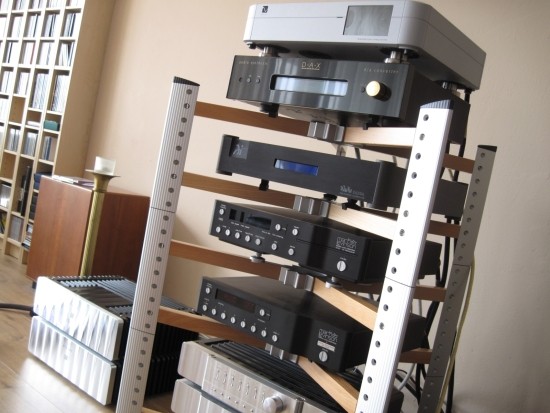
Almost final conclusion
The PWD surprised me immensely. It showed me how computer replay was inherently flawed, and it even showed my best effort at it where it was lacking. The PWD has a very upbeat character, articulates very well and has explosive dynamics and very good focus and soundstaging. Also, it manages to never sound synthetic or thin. Some of its qualities even surpass those of my reference Levinson no.390S cd player, such as focus, dynamics and rhythm. But the one area where I find it lacking is in what I can only describe as luxury. I miss some exuberance, some harmonic completeness, a certain ripeness that tells me that I am listening to real singers, not recordings. State of the art DACs and CD players can do this. But that’s an unfair comparison because invariably they cost multiples of what the PWD costs and they don’t have the PWD’s versatility. The PWD is highly tweakable and I think it deserves the best interlinks and power cable that you can afford: it really will keep rewarding you with better sound. This is the almost final conclusion because I wanted to try some more tweaks… If you don’t want to wait any longer, proceed to the Final Conclusion.
PWD final tweaks and adjustments
I have ordered an extension for my Finite Spider rack. The PWD will sit on top and then I will decide upon the best feet. Already it was clear that Ceraballs tend to add some dryness but also some sparkle. The standard rubber feet that come with Spider racks mellow up the sound but take away some of the PWD’s rhythmic qualities. I have also ordered Hifi Tuning pure silver fuses, to replace the regular fuses inside the PWD. Surely I will come up with more tweaks but for now, this concludes my experimenting with the PWD. As soon as I have the results of the PWD’s placement higher in the Spider rack (which does affect sound!) and the results of changing the fuses, I will report back.
The final tests, as well as the overall conclusion, are in part 3 of this review.

